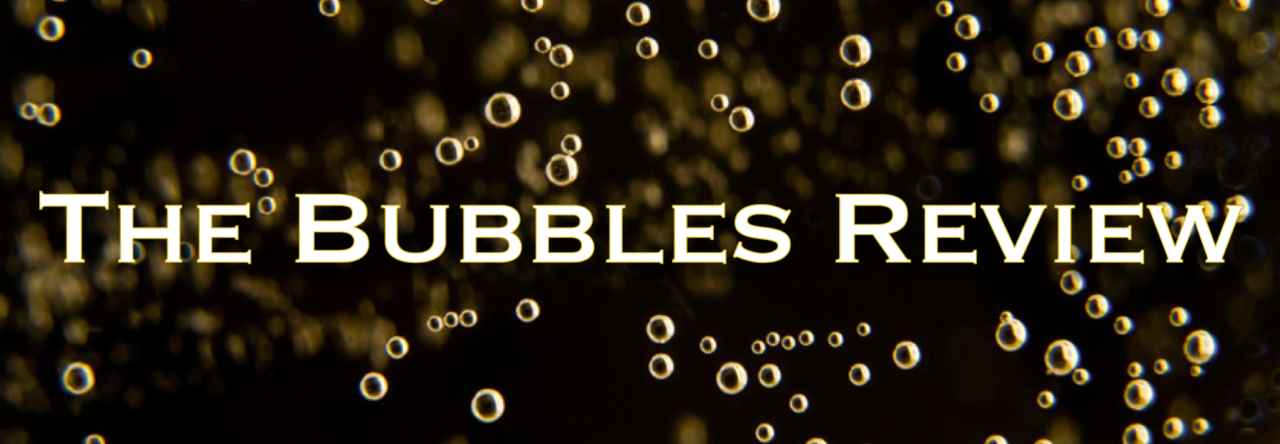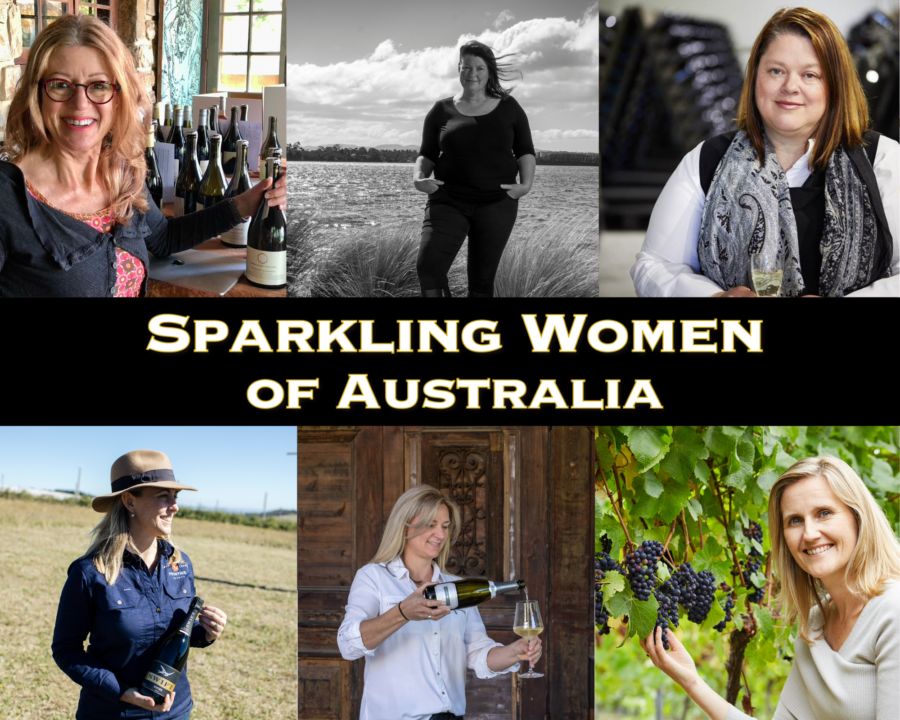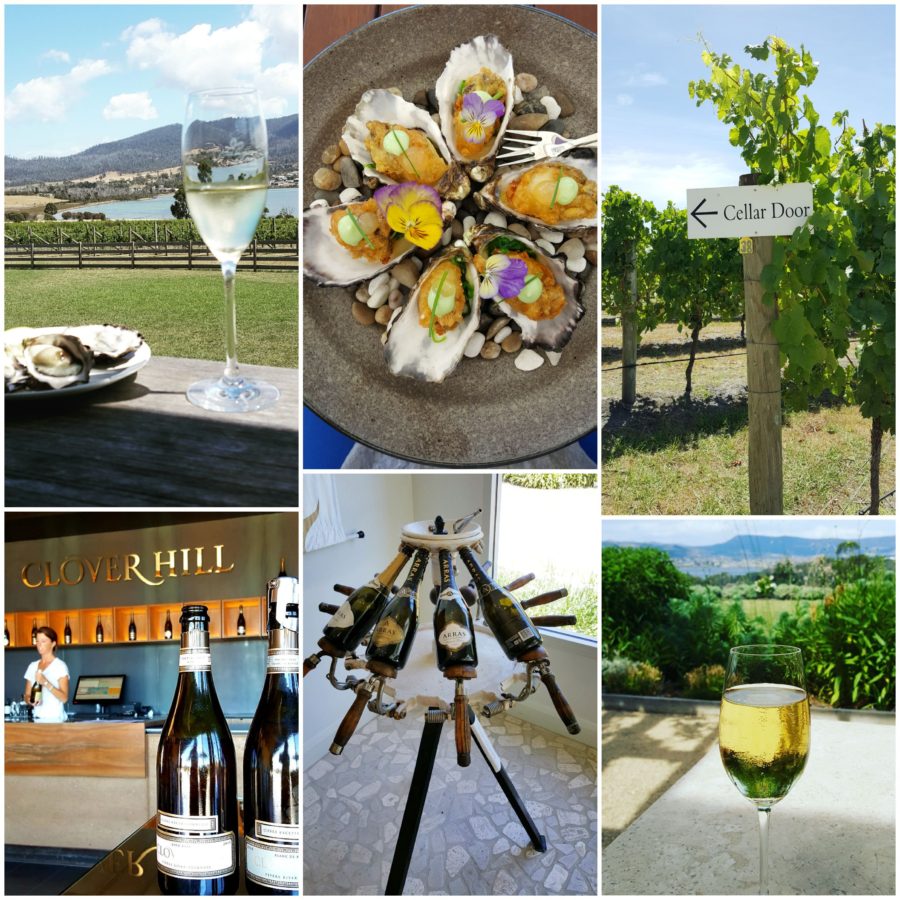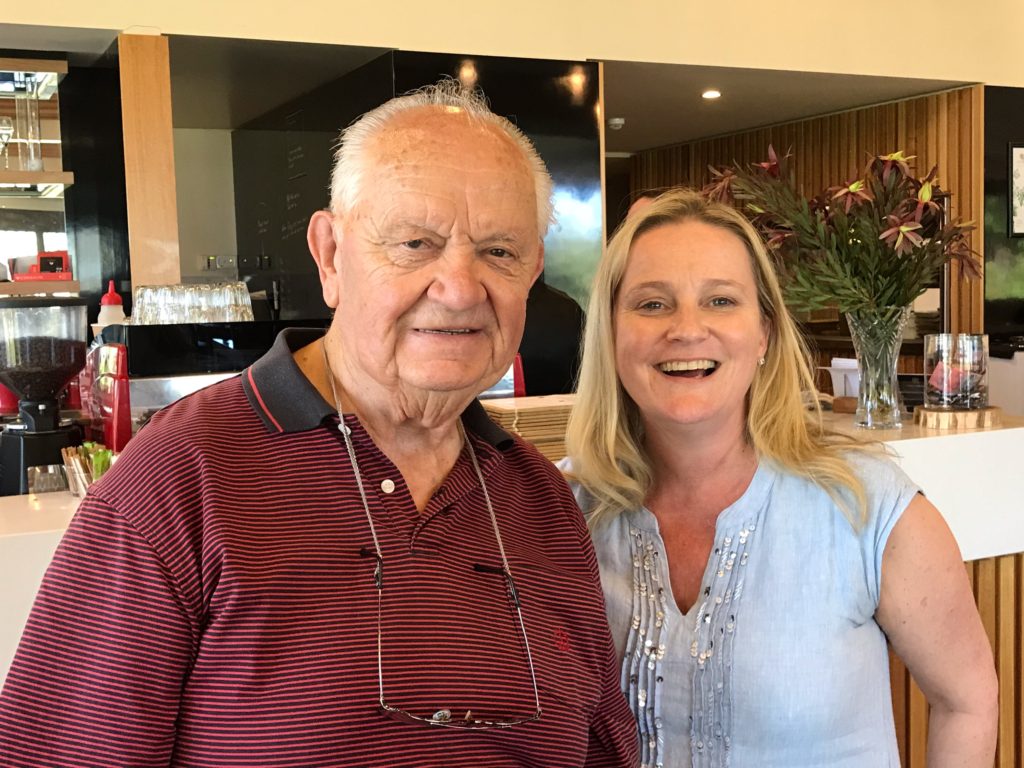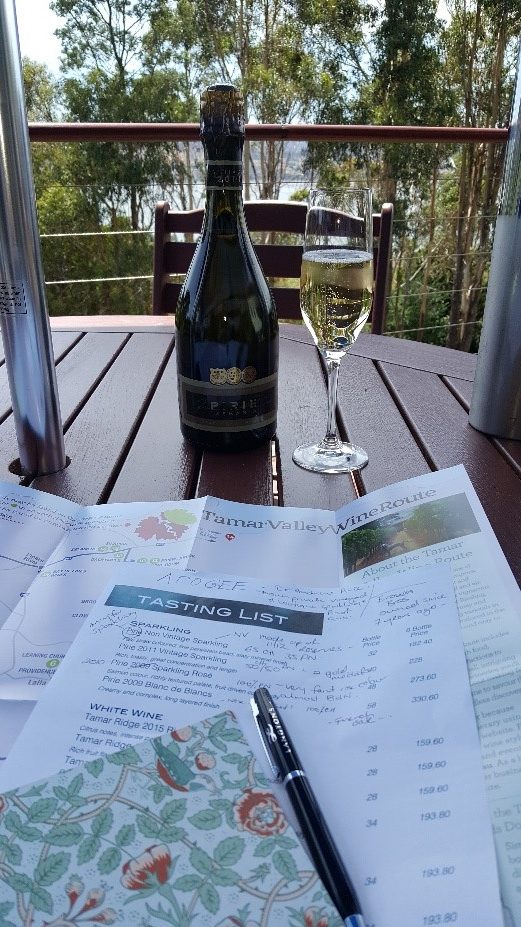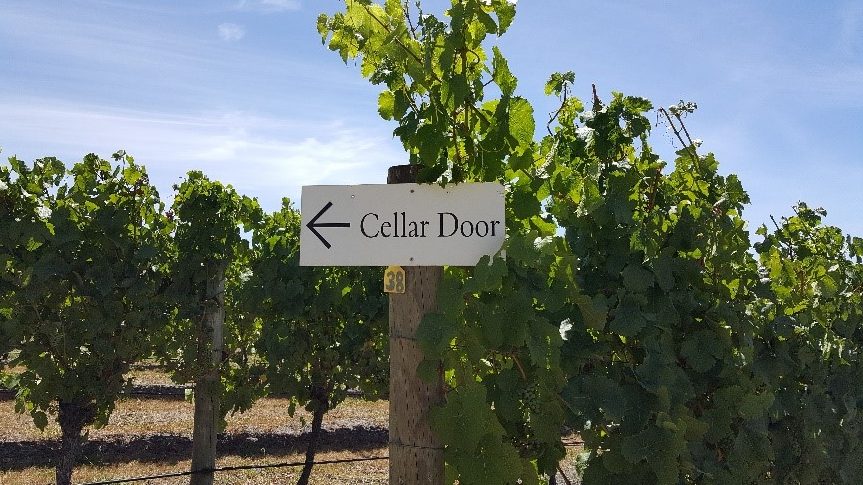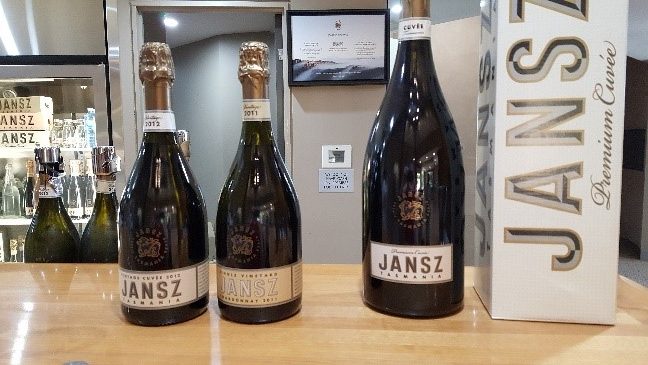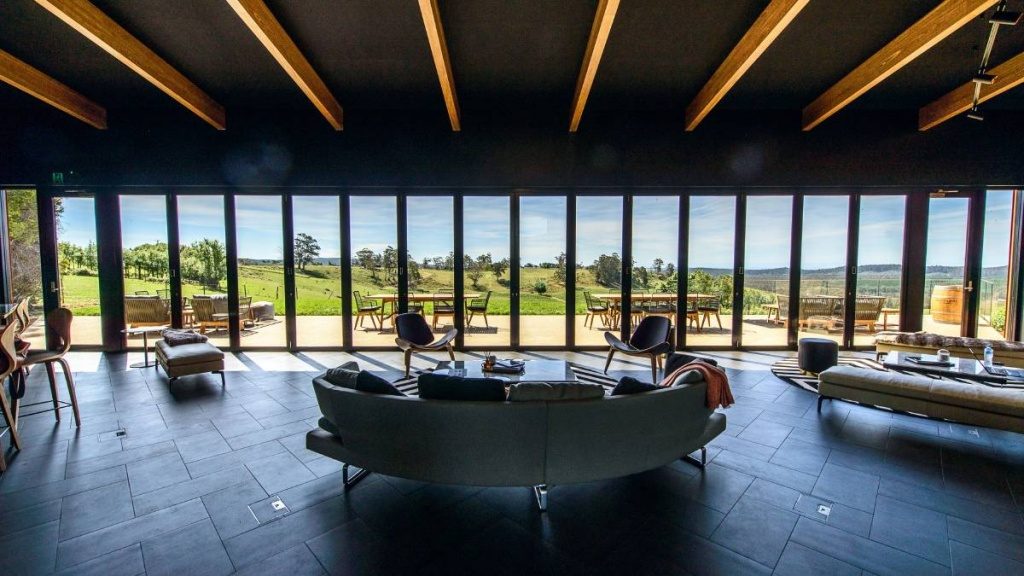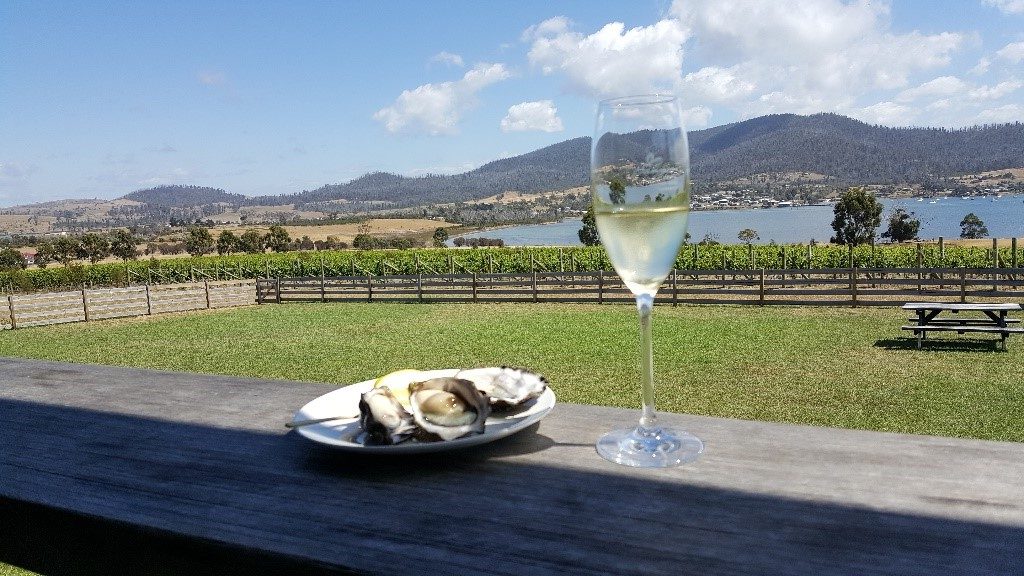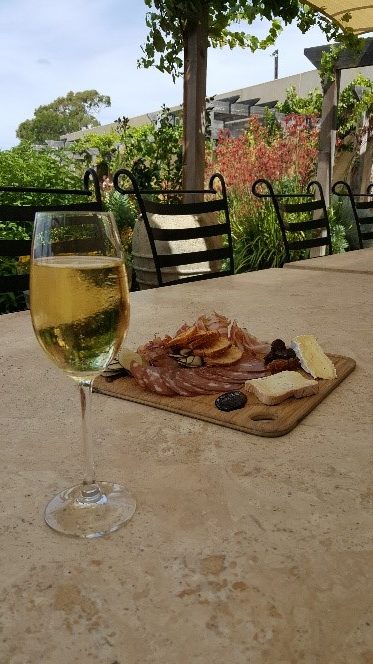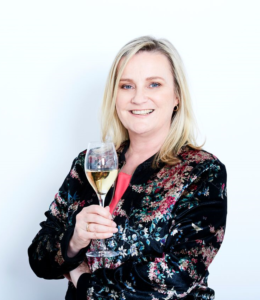To celebrate International Women’s Day this week, we are so excited to share this series of interviews with the Sparkling Women of Australia!
I have had a love of bubbles for all my adult life. For my 18th birthday I had a champagne luncheon, and not long after that I did the tour of the historic ‘drives’ in the Great Western region in Victoria – arguably the birthplace of Australian sparkling wine. Since then, my love of bubbles and travel has taken me to many sparkling wine regions including Champagne (several times!), and I have had the joy of meeting and interviewing many champagne and sparkling winemakers. I love everything about drinking it, as well as the stories, the romance, the glamour of bubbles, and I particularly love meeting the people.
Around six years ago, I had the idea to turn my love of champagne and sparkling wine into a business and I created The Bubbles Review, which allows me the great joy of sharing stories through our blog and incorporating my 30 years of travel industry experience to run events and tours. Creating a business that means you get paid to drink champagne is awesome, and we have been listed in the top champagne blogs in different countries around the world, which is also pretty amazing!
I think that champagne and sparkling wine is one of the joys of life and something to be shared, and it has been an honour to interview these remarkable women working in the Sparkling Wine industry in Australia and share their stories with you.
Natalie Fryar
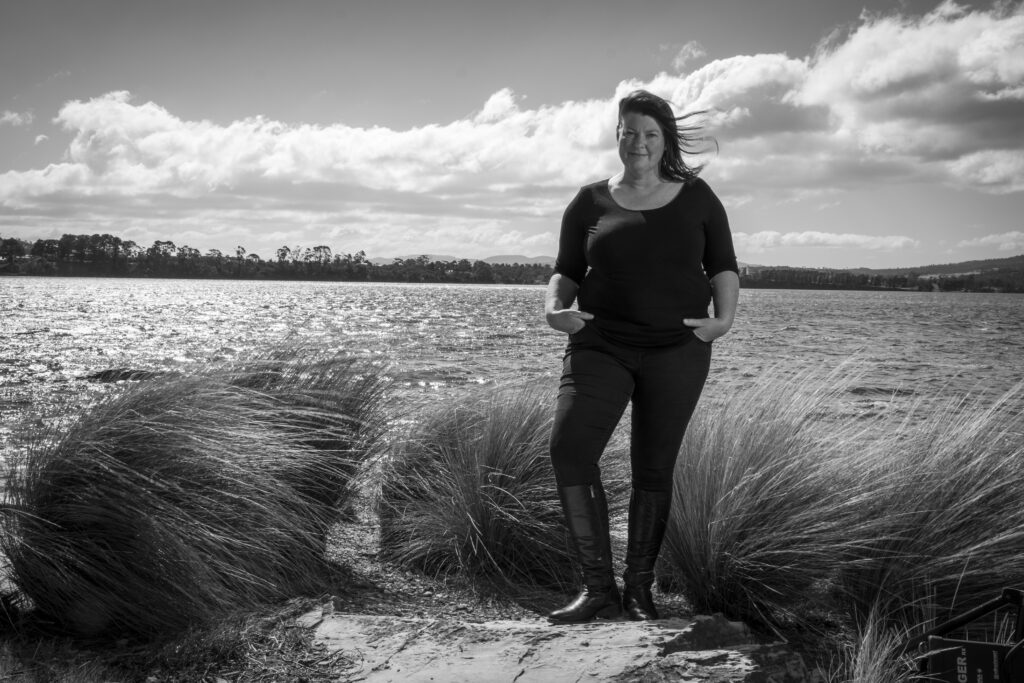
Natalie Fryar, Proprietor/Winemaker, Bellebonne Wine Company
Our Sparklings: Bellebonne Vintage Rose, Bellebonne Vintage Cuvee, Bellebonne Vintage Blanc de Blancs, Bellebonne ‘bis’ NV Rose
We’re so excited to include you in this interview series. Tell us a bit about what your role is in the Sparkling Wine industry?
I have been fortunate enough to have been making sparkling wines in Australia since 1996. It was when I took a role at Seppelts Great Western winery with the specific goal of learning everything I could about sparkling wine growing and making and I simply fell in love with all things sparkling.
From then I made sparkling wines from most regions across the nation including Tasmania, whose fruit completely seduced me and now I have my own sparkling wine company in Tasmania, Bellebonne.
Can you tell us a bit about your background, have you always worked in the wine industry? What is it about Sparkling wine that is particularly exciting?
I did my high school work experience at Hardys Reynella winery, way way back when I was in year 10, and never looked back, I love the wine industry and have enjoyed every year since. It is a wonderful way to connect with the world, from growers to sommeliers, wine lovers and everyone in between.
For me wine can capture a moment in time and speak directly of a place, and each time you taste that wine it can transport you to then and there. Nothing more so than sparkling wine, its beauty, elegance and longevity, and it natural connection to the celebrations we most treasure in our lives means that it is always my most loved wine style.
Can you remember when you first sipped ‘bubbles’ or when your passion for sparkling wine started?
Whilst I can’t remember the first time I sipped bubbles, I distinctly recall the moment that my life changed forever, and I made the decision to dedicate myself to making great sparkling wine. It was in the mid 90’s at Great Western and I had the pleasure of tasting a decades old sparkling from the beautiful underground cellars, or ‘Drives’ with some winemakers of infinitely more knowledge and experience than me. Being able to taste a wine that maintained its freshness, beauty, and sense of place after so so long in bottle and to see its greatness through the eyes of such skilled winemakers sent a jolt through me and that was that!
Considering International Women’s Day. Do you think it is different for women working in the wine industry? Can you share some thoughts on this?
It is different for women in the wine industry, as it is for women in almost every industry, especially those that are traditionally male dominated. Across our society I believe, and hope, that change is happening. I have great faith in the new generations of women and men coming through, they give me hope that old ways of people from all minorities and marginalized groups being excluded and worse from our industry are disappearing. There is much more work to be done, but the rewards are so great. We have a wonderful industry, and most importantly beautiful wines, and to share that equally with ALL people who want be part of the creation and support of that is a beautiful thing.
Is there someone in the sparkling wine industry who inspires you? Can you share a bit about how or why?
I’m inspired by so many people, those that first saw Tasmania as an incredible sparkling wine opportunity who are still making it on their own terms today (Andrew Pirie ), those that have held the torch high around the globe for the great Sparkling wines of Australia (Ed Carr, Tyson Stelzer), those that dedicate their entire lives to crafting the most beautiful wines imaginable, wonderful friends and winemakers across Champagne. But importantly I’m also inspired by the next generation of winemakers and communicators that see the greatness of what we have here and want to make their own mark on the landscape of sparkling wine.
How do you think that Aussie Sparklings compare to international sparklings including champagne?
All great wine, sparkling wines included of course, is the same in this way; it is a reflection of the winemakers passion and belief about the place, history and climate of their particular patch.
The greatest sparkling wines from around the world have this in common and are therefore entirely individual.
My excitement about an incredible champagne is matched by my excitement about an incredible Tasmanian (or other) wine. The Champenoise do have the advantage of hundreds of years of winemaking practice, honing skills and understanding the unique characters of their vineyards, and the sheer scale of their industry, but I believe that the wines made here truly great also.
What is the wine making philosophy that drives the sparkling wine production at your winery?
For me it is all about trying to capture the pristine fruit power and elegance of Tasmanian fruit. In turn hoping to capture something magical about this place. I try to frame my wines around the fruit first, and then build the longevity and complexity around that.
If you were to describe how you feel about working with sparkling wine in three words, what would they be?
Inspiring, Challenging, Delicious!
Emily Swift

Emily Swift, Owner and Marketing Manager, Printhie Wines (producers of Swift Sparkling)
Our sparklings: Swift Sparkling – Cuvée, Rosé, 2014 Vintage, 2017 Blanc de Noirs, 2011 Blanc de Blancs
We’re so excited to include you in this interview series. Tell us a bit about what your role is in the Sparkling Wine industry?
As a family owned business we tend to do everything across the business but officially I do look after the marketing for Printhie Wines and our traditional method Swift Sparkling range.
Can you tell us a bit about your background, have you always worked in the wine industry? What is it about Sparkling wine that is particularly exciting?
I haven’t always been involved in the wine industry, but have always had a deep connection with the land and agriculture which is, I believe, fundamental to understanding wine. I grew up on a cropping and stock property 60kms north west of Dubbo in New South Wales. From there I studied communications and after several years overseas I came back to focus on my corporate marketing career in the utilities and agriculture industries. My first appreciation for wine came from an unlikely source. Whilst working on private yachts in the Mediterranean and Caribbean I was fortunate to learn about the great wine houses of France. Serving Cristal, Chateau Margaux and Chateau Yquem to name a few. These wines were often served during the one dinner. My interest was piqued and I began to learn about wine. It was by pure chance that I ended up marrying Ed Swift, whose family had just started Printhie Wines and I moved to Orange, NSW. Whilst being involved in the family wine business for the last 17 years it has only been in the last three years that I have joined the family business full time. After several trips to Champagne the business decided to commit to making traditional method sparkling. We knew this was a labour of love – why else would you make a sparkling wine and then put it away for 10 years before seeing a return! We started Swift Sparkling in 2010 and we now have 5 sparkling wines in our portfolio. Twelve years down the track and our Swift Cuvée was awarded Best Australian NV Cuvée at the Champagne and Sparkling World Wine Championships in London at the end of 2021 and Swift has been awarded Best Sparkling in NSW for the last four years.
Can you remember when you first sipped ‘bubbles’ or when your passion for sparkling wine started?
It would have to be when I first experienced Cristal. I was at St Barts in the Caribbean working on a private super yacht which was chartered by Puff Daddy (Sean Combes). The only alcohol he ordered for his 7 day charter was Cristal. When he found out it was my birthday he took me (and a couple of deck hands) to a restaurant on the island for dinner. He grabbed some bottles of Cristal before we left the yacht and continued to spray them out of the window of the taxi all the way to dinner – what a waste! I was completely hooked from there and the rest, as they say, is history.
Considering International Women’s Day. Do you think it is different for women working in the wine industry? Can you share some thoughts on this?
Having worked in male dominated industries for my whole working life I’m used to dealing with predetermined opinions of what your role and capabilities must be, purely based on your gender. Even when I was a senior manager in my last role I would often get asked by men to do some photocopying for them simply because I was the only female in sight. The wine industry has a long way to go like many others but I do feel there is a better awareness and heightened appreciation of the skills females in the wine industry can and do contribute. There are also some great mentoring programs in the industry that can provide career support for women so I think we should be positive about the career prospects for women in this industry.
Is there someone in the sparkling wine industry who inspires you?
Can you share a bit about how or why? We admire Pierre Peters, based in Mesnil sur Oger (Champagne region), France. They are a family-owned champagne house that has continued to adapt and modernise their brand. We often chat to them about sparklings so it’s great to have a connection with a forward thinking Champagne house like theirs.
How do you think that Aussie Sparklings compare to international sparklings including champagne?
Our sparklings are totally on par with champagne and its incredibly frustrating that if you put down a bottle of Australian traditional method sparkling and a champagne, people will automatically grab the champagne. We need to educate Australians that we make stunning traditional method sparklings. Whilst relying on age old knowledge of crafting champagne, we have the freedom to produce new age sparklings that challenge the staus quo. Based in the cool climate region of Orange NSW, we have the perfect growing conditions for sparkling wine. The grapes for our sparklings come from the vineyards located 1000 metres above sea level – we call this the snow line. If it snows in Orange it snows down to 1000 metres every time and provide the perfect acidity for sparkling wine bases.
What is the wine making philosophy that drives the sparkling wine production at your winery?
Our philosophy is to make wine that shows our connection to the land. Our sparklings are truly representational of cool climate craftsmanship from the fertile slopes of the extinct volcano Mt Canobolas from vineyards around 1000 metres above sea level. Basically we focus on fruit purity and time. It starts with the vineyard being in top condition and then giving the wines time to develop their true characters.
If you were to describe how you feel about working with sparkling wine in three words, what would they be?
Passionate, fortunate, excited
Dianne Gardiner

Dianne Gardiner, Owner (and chief marketer, taster, and consumer) Rahona Valley and the Australian Cuvée Centre
www.australiancuveecentre.com.au
Our Sparklings: Rahona Valley Cuvée Blanc, Rahona Valley Sparkling Rosé NV, Rahona Valley 2017 Vintage Rosé, Rahona Valley 2015 Blanc De Noirs – Late disgorged
We’re so excited to include you in this interview series. Tell us a bit about what your role is in the Sparkling Wine industry?
In 2014, my husband and I purchased a small vineyard on the Mornington Peninsula, and from there our love of sparkling grew. The previous owner had made sparkling wine, and so we started to learn more and more about the process and fell in love with it. We were then introduced to Natalie Fryar, Australia’s ‘Queen of Rosé’ who started working with us in 2018, and she elevated our sparkling products immediately and showed us what more we could do. It was only then that we realised how technical sparkling winemaking is, how easy it is for things to go wrong, but also how rewarding it is when you get to taste the magic three years on.
We then had a once-in-a-lifetime opportunity to purchase some fantastic sparkling wine equipment, and that lead us to establish the Australian Cuvée Centre, which is a dedicated facility on the Mornington Peninsula to assist other winemakers make great sparkling wine. With Natalie and Alisdai Park (our sparkling winemakers), we now have a facility that combines world class expertise with world class equipment to elevate sparkling winemaking.
We have more recently embarked on producing sparkling wines from Tasmania, as well as from the Mornington Peninsula, and this is now part of our journey. Helping educate consumers on the magic in the bottle that is sparkling wine, and helping them appreciate the differences, expertise, time and patience that goes into making a great bottle of sparkling.
What is it about Sparkling wine that is particularly exciting?
It really is a case of science meets art – and it is truly magical what can happen inside the bottle, given the right amounts of love, care, attention and time.
Can you remember when you first sipped ‘bubbles’ or when your passion for sparkling wine started?
When we disgorged our first bottle of sparkling, and then later sat down to drink some of it.
Considering International Women’s Day. Do you think it is different for women working in the wine industry? Can you share some thoughts on this?
Women are underrepresented in wine industry for sure, but we are slowly seeing that changing. What is great to see at the forefront of our sparkling wine industry are some fabulous Australian women including Natalie Fryar, Louisa Rose, Jennifer Doyle, Kate Laurie and Cate Looney. I think women add something special to sparkling winemaking.
Is there someone in the sparkling wine industry who inspires you? Can you share a bit about how or why?
Working with Natalie Fryar has been amazing. She is awe-inspiring. Not only is she an amazing winemaker, whether you’re a consumer just starting out, or an experienced winemaker, Natalie has a knack of pitching the conversation at exactly right level.
How do you think that Aussie Sparklings compare to international sparklings including champagne?
Champagne have done a phenomenal job of marketing Champagne, and the rest of the world has done little. As Australian’s, we love Champagne, but most who drink it fail to appreciate the subtle differences, and fail to understand that other countries, including Australia, make fantastic sparkling wine too. We just can’t call in Champagne. And then there’s Prosecco, which is a different wine altogether, but again, few Australians understand the difference.
I think some of the best traditional method sparkling wine in Australia can absolutely stand up proud alongside Champagne and other international sparklings. Ed Carr has proven that, and the rest of us just need a little more time to get there.
What is the winemaking philosophy that drives the sparkling wine production at your winery?
Our philosophy is there is no point doing things by half measures. Sparkling winemaking takes dedication and commitment well beyond most other wines. That means we need three things: premium fruit, knowledge and expertise in sparkling winemaking, and quality facilities to maintain the integrity of the product throughout its life.
We need to start with great fruit (grown for sparkling wine), and then it is our job to turn those grapes into the best sparkling wine we can produce and care for it as it develops and matures – maximising the return from the premium quality fruit in every way we can. Only then have we done our job.
If you were to describe how you feel about working with sparkling wine in three words, what would they be?
Brave, excited, challenged.
Jane Bromley
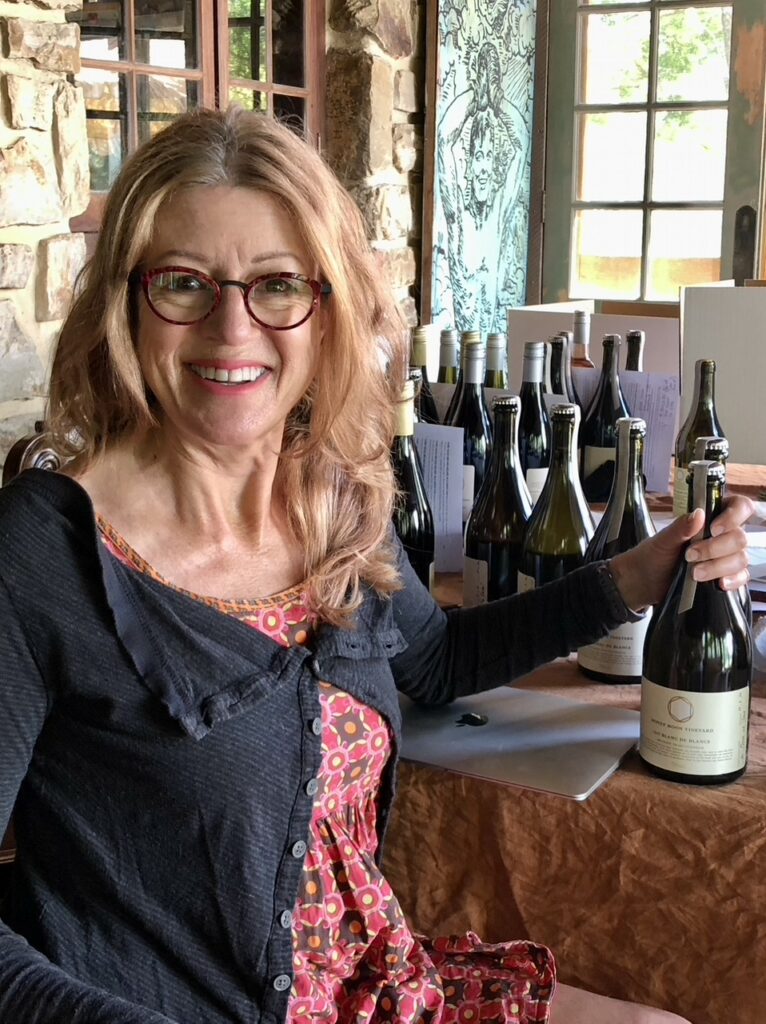
Jane Bromley, Winemaker, grapegrower and owner. Honey Moon Vineyard
Honey Moon Vineyard – Adelaide Hills
Our Sparklings: Honey Moon Vineyard Blanc de Blancs 2017 and Honey Moon Vineyard Rosé Brut 2018
We’re so excited to include you in this interview series. Tell us a bit about what your role is in the Sparkling Wine industry?
Honey Moon Vineyard grows grapes and makes wine in the Adelaide Hills, to produce fine sparkling wine via the traditional method (aka Méthode Traditionnelle). We also make table wines and fortified wines. Our presence in the wine sector is tiny, but we are hugely passionate about what we are doing.
I also conduct sparkling wine and champagne classes, mainly for university students as part of their sensory/wine tasting training. This is such an honour, as these students are the future viticulturalists, winemakers, wine biz professionals and wine influencers in Australia and around the world.
Can you tell us a bit about your background, have you always worked in the wine industry? What is it about Sparkling wine that is particularly exciting?
The history, science, alchemy, and art of wine have long held my interest. It has been many years since my first experience of an Adelaide Hills grape harvest (in 2001), and since planting our vineyard in 2004, and I remain fascinated and energised by working in wine.
The old-world wines and vineyards of Europe are a source of inspiration and underpin my many years of work as a wine educator on Champagne.
I have also had the privilege of two interesting and rewarding careers in the university sector –firstly in plant science research and later in enterprise-wide professional roles concerning policy development and implementation, legislative compliance, and enterprise bargaining.
Sparkling wine is particularly fascinating for me as it demands a lot of attention to detail, so it is interesting to make, and it also brings lots of joy to consumers.
I have a long-held interest in the historical, cultural, social and technical aspects of Champagne and was fortunate to be awarded the Vin de Champagne Award in 2002 and the Diploma d’Honneur Corporation des Vignerons de Champagne in 2009.
Can you remember when you first sipped ‘bubbles’ or when your passion for sparkling wine started?
I don’t recall my first taste of sparkling wine but a chance glass of a vintage champagne at a special art event astounded me … how can a wine be so fresh, so delicate, so powerful, so light, so detailed, so textural and so elegant! After that, I kept finding great examples of sparkling wine and was hooked.
Is there someone in the sparkling wine industry who inspires you? Can you share a bit about how or why?
Two women pop up brightly in my thinking – Adelaide Hills winemaker Kate Laurie and SA-based wine writer Katie Spain.
Kate makes excellent sparkling wine. She is involved in fine detail of every aspect from the grape to the final glass, she is a very knowledgeable and down-to-earth speaker and an inclusive advocate for Adelaide Hills sparkling wine.
For me, the story behind a wine is really important – where it comes from, why, how it plays a part in the social and cultural fabric of people’s lives, etc. Katie Spain has a huge passion for the stories and people behind wine. She tracks them down and writes about them beautifully.
These women inspire me and make me feel extra pleased to be a fellow woman working in wine.
How do you think that Aussie Sparklings compare to international sparklings including champagne?
I think that we are very well served by the quality and variety of sparkling wine available to us in Australia, from our own wineries and also from imported offerings.
Champagne holds a unique position as the international benchmark for the very best sparkling wine. The champenois grow grapes in a very cool climate, and make their wine using insights and methods honed over many centuries. Champagne thus provides inspiration for those who aspire to make cool-climate, traditional-method, sparkling wines here and abroad.
Australian traditional-method sparkling winemaking has been evolving over many decades, and these days has carved out its own identity in the premium wine sector. To quote Ed Carr, ‘Australian sparkling wine began moving in two directions from the mid-80s onwards … There’s the volume stuff that’s made to a price point, and the premium sector, which took off as people started pushing to make cool-climate, traditional-method sparkling wines.
And then there’s the Proseccos, Moscatos, Pet Nats, fresh/appertif sparkling wines fermented in tank, sparkling reds, and so on, that are also available to delight our taste buds and grace our tables.’
What is the wine making philosophy that drives the sparkling wine production at your winery?
Our philosophy is simple: pay attention to what is happening in the vineyard; take what nature gives us each vintage with gratitude; be gentle with the grapes; make the best base wine we can in our mature French oak barriques, to set the wine up for eventual graceful maturation on yeast lees; be creative at the blending stage; disgorge in small batches to maximise time spent on lees, gaining complexity and texture while retaining freshness. Our intention is to make sparkling wines that have interesting flavours and textures, and that are always refreshing to drink.
If you were to describe how you feel about working with sparkling wine in three words, what would they be?
I think that it is a privilege.
Vanessa Bagot
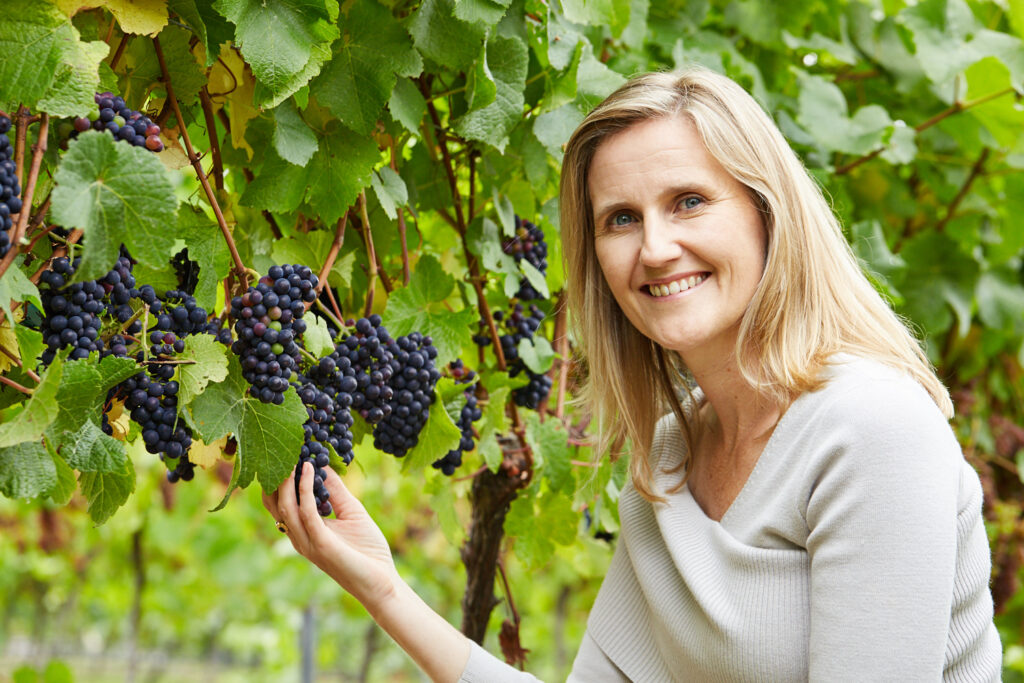
Vanessa Bagot, Owner, Barringwood, Tasmania
Our Sparklings: Classic Cuvée, Blanc de Blanc, Tasmanian Cuvée, Schonburgersekt
We’re so excited to include you in this interview series. Tell us a bit about what your role is in the Sparkling Wine industry?
As the owner, I have oversight across all aspects of the operations of the business and making sure each of our team members are happy and productive in the roles they play. From an execution point of view, my focus is on strategy, marketing sales and finance. I set the direction for our wine styles.
Can you tell us a bit about your background, have you always worked in the wine industry? What is it about Sparkling wine that is particularly exciting?
I have a psychology degree and a Master of Commerce in marketing, and I spent most of my pre-wine career in Market Research working with business across a wide range of industries from Fast Moving Consumer Goods to niche industrial products and government. We bought Barringwood in 2012 because we thought it would be a nice hobby/distraction … it turned into more of an obsession. I love the fact that sparkling wine is associated with joy. I love the complexity in the process of making it so there can be so much variety from the same starting point.
Can you remember when you first sipped ‘bubbles’ or when your passion for sparkling wine started?
It wasn’t the first time, but I have a very strong recollection of buying a particular bottle of Champagne when I was 19 in 1989. I spent the year waiting tables in Cambridge UK being paid £1.50 an hour, and shortly before I left, I went into a bottle shop and splashed out on a bottle of Veuve Clicquot and decadently sipped it in a park on the banks of the Cam!
Considering International Women’s Day. Do you think it is different for women working in the wine industry? Can you share some thoughts on this?
It feels to me that women in the industry are very visible, very successful and respected … but I could be wrong!
How do you think that Aussie Sparklings compare to international sparklings including champagne?
Tasmanian sparkling is amazing and compares very favorably with regards to quality and value with international sparkling, including Champagne.
What is the wine making philosophy that drives the sparkling wine production at your winery?
We get to work with an amazing base product because our vineyard is climatically perfect, and our long, cool growing season allows sugars to accumulate while maintaining natural acidity. Our winemaking philosophy is to do as little as possible and work with the wonderful fruit nature delivers.
If you were to describe how you feel about working with sparkling wine in three words, what would they be?
Fortunate, challenged and fascinated.
Kate Laurie
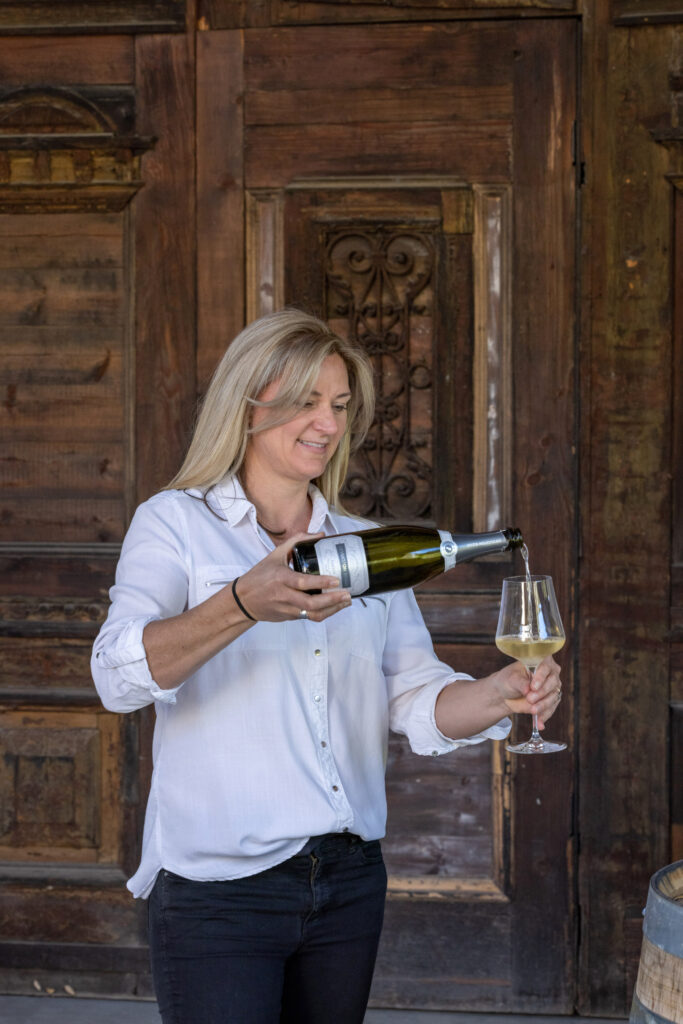
Kate Laurie, Owner/Winemaker, Deviation Road
Name of sparklings produced: Altair Brut Rosé, Loftia Vintage Brut, Southcote Blanc de Noirs, Beltana Blanc de Blancs
We’re so excited to include you in this interview series. Tell us a bit about what your role is in the Sparkling Wine industry?
Primarily my role is that of a sparkling winemaker for our own small family winery, however I would have to add I am fairly good at tasting them as well! I love to share what I know and often give masterclasses on tasting champagne and sparkling wines. I am always surprised at how interested people are in focusing on the technical side of the wines as much as the flavours in the glass.
Can you tell us a bit about your background, have you always worked in the wine industry? What is it about Sparkling wine that is particularly exciting?
Having lived and studied in Champagne in my late teens, my winemaking passion has always been to master the art of creating quality sparkling wines with their own regional context. Together with my husband Hamish, those early aspirations have been realised through the wines we produce under our Deviation Road brand. Even after about 20 years making sparkling, I am always so excited when it comes to releasing each wine after its time on lees to see the magic that has happened during the second fermentation and subsequent ageing process. There is always a level of mystery involved that no science or numbers can predict will show up in the end product.
Can you remember when you first sipped ‘bubbles’ or when your passion for sparkling wine started?
I discovered sparkling when I went to live in Champagne. To be completely honest, I didn’t drink much wine when I moved there, and was frantically reading my dad’s copy of Bryce Rankin “How to make good wine” before I started school!
I do remember being mesmerised as much by the bubbly deliciousness in the glass as the descriptors my host family used to describe the aromas and flavours to look for. I left Australia after a run of 18th birthday parties, where I can safely say the attention paid to the celebratory toast sparkling was lacking compared to this new world I found myself in. My eyes were opened to the creative beauty that could come with a career that fundamentally allowed me to indulge my passion for science – which I loved, but didn’t want to spend every hour in a lab, so discovering wine and viticulture was the perfect occupation for me.
Considering International Women’s Day. Do you think it is different for women working in the wine industry? Can you share some thoughts on this?
When I started out as a winemaker it was very much a male dominated industry. I was lucky to have supportive male role models who believed there were no barriers – physical or emotional – to me fulfilling my dreams. At Deviation Road we try to empower our entire team that they can do it all. Hard work, a good attitude (and sense of humour) go far. It is my nature to be very hands on with all facets of the business – from driving the forklift and digging out fermenters to meeting with the creative team, so they have no choice really but to follow my example!
I am aware, however, that my situation is quite unique, and that for many women in the industry they have had to overcome more hurdles than I have. You still hear about women that have left good jobs after finding out that a male doing the equivalent was being paid more. That is inexcusable.
Is there someone in the sparkling wine industry who inspires you? Can you share a bit about how or why?
I am massively impressed by Jane Bromley and Hylton McLean from Honey Moon Vineyard in the Adelaide Hills. They are passionate about their craft as well as have an incredible knowledge of champagne and sparkling styles. They are also extremely humble and dedicated to making a very small amount of exceptional sparkling wine … all by hand and disgorged to order.
How do you think that Aussie Sparklings compare to international sparklings including champagne?
Without a doubt there are world class Australian sparklings coming from pockets all around the country. The highest quality examples I’ve tasted haven’t necessarily come from the traditionally ‘famous’ regions, but from people of incredible grape growing and winemaking talent. It takes serious commitment in every step of the process to have all the aspects align in a harmonious bottle of sparkling. Traditional Method is labour intensive, takes patience and is expensive to make. Georgia from Georgia Dale Wines in Victoria is so gutsy and passionate about perfecting sparkling and her first release Blanc de Blancs was very exciting. You get a sense of her strength and dedication in the wine, mirrored in the power of the aroma and structure on the palate. Heading up to Orange in NSW, Printhie wines, are creating excellent age-worthy sparklings under their Swift Sparkling label. Then, of course, in Tasmania you have Arras that leads the way in complex aged sparkling under the meticulous eye of Ed Carr and his team. Delamere also in Tassie is one that also impresses repeatedly … to name a few! Back here in the Adelaide Hills, DAOSA is leading the way in oak aged base wine adding layers of complexity. Anyone interested in increasing their knowledge of Australian Sparkling has a fun journey ahead – shop at a small independent retailer, as they will have specific knowledge of the styles and be able to guide you through a whole year or two’s tasting journey!
What is the wine making philosophy that drives the sparkling wine production at your winery?
We value the elements that make the wine, not the hand of the winemaker. The dream is to produce a glass of sparkling that showcases a hint of that season, gives a nod to the region it came from, and a wink to the gods of time who nurture it through the years before it is ready to be released.
If you were to describe how you feel about working with sparkling wine in three words, what would they be?
Thrilling. Crazy. Fortunate.
You may also like these blogs:
Here’s cheers to the fabulous women of Champagne
Adelaide Hills Sparkling Cellar Doors
Like to keep following us, get first look at events, receive bubbly information and be in our giveaway draws and have a chance to win a bubbly prize? You can join our list, it’s FREE to join here.
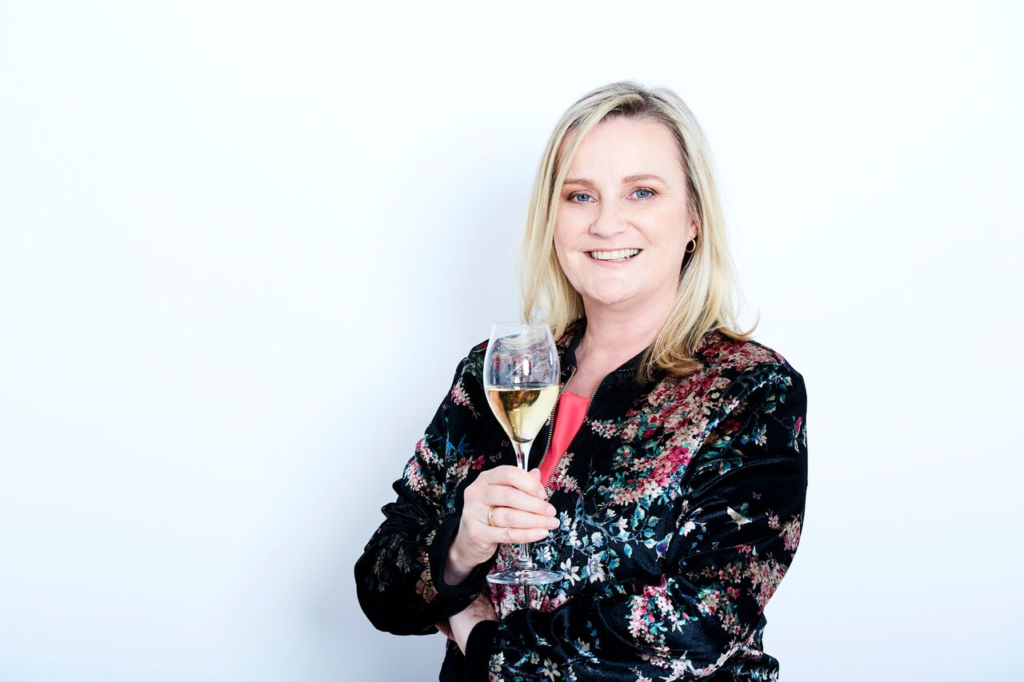
Natalie Pickett is the Founder of The Bubbles Review which is for people who like champagne and other bubbles, written by people who have a love of all things sparkling! At The Bubbles Review, we like to debunk some myths, make the art of drinking champagne accessible, explore bubbly regions and champagne bars, and provide events for you to join us and indulge.
